Welcome to the Group III/ Texas Wing SARex Page
Mission Number SWLR-02-0017
9, 10 & 11 November 2001

Click on a link below to see other areas of the SARex!
[
SARexCommand
|
Aircrew
|
Ground Crew
|
Communication
|
Safety
|
PAO Ground Team
|
Cadets
|
Group 3
]
Aircrews
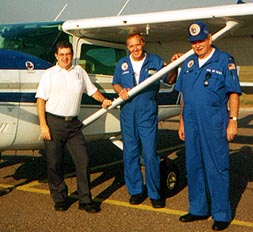 Aircrews are the backbone of the Civil Air Patrol. Above is a picture of 2Lt Jerry Lunceford, S/M Floyd McClannahan and 2Lt Robert Shaw. They were among the many sorties that trained and searched South Texas for the various non-distress objectives. In all over 6 sorties air sorties were launched throughout the course of the SARex.
Aircrews are the backbone of the Civil Air Patrol. Above is a picture of 2Lt Jerry Lunceford, S/M Floyd McClannahan and 2Lt Robert Shaw. They were among the many sorties that trained and searched South Texas for the various non-distress objectives. In all over 6 sorties air sorties were launched throughout the course of the SARex.
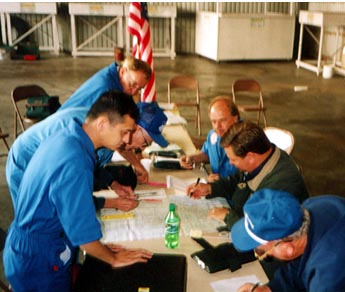
A lot goes into planning when a crew goes "up in the wild blue yonder." We of the Civil Air Patrol need to insure that safety is foremost on the adgenda. No plane is launched unless it is inspected, no aircrews are launched unless they are rested and in top shape. Above, a pre-flight planning session is held to insure that eveyone knows what's going on. Important calculations, such as weight and balance, are done to insure optimum safety.
Up in the Wild Blue Yonder!
Aircrew missions have got to be tops in safety. The aircraft is inspected and the crews are well prepared for their mission. The following pictures will try to show you what goes on on a CAP mission aircrew style.
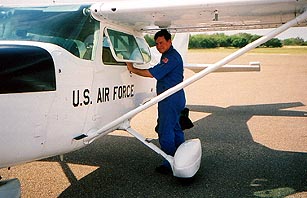
Before the flight, aircrews prepare themselves and take their positions. The PIC, or Pilot-in-Command, is incharge of the mission. There are several jobs a person can be trained to do on aircrew. The obvious is the Mission Pilot, this is the guy that flies the aircraft to and from the target area. Also, a person could become a Mission Scanner this officer's job is to search the ground for the objective and insure that other airplanes are accounted for. We wouldn't want to run into anyone else up there. Lastly, there is the Mission Observer whose job it is to document information and operate radio and other functions.
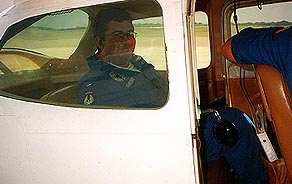
Here 1Lt Jaun F. Arredondo, takes his position as a scanner. He is also acting as a photographer on this mission for Group III Public Affairs. "Go get 'em Tiger!"
Now comes the time to fire-up the engines and secure the door. The prop spins into invisiblity. This shot is courtsey of "post-production" zoom. One must exercise caution when around props. The plane makes its way up to the taxi area and awaits its instructions from HQ via the Communications Tent.
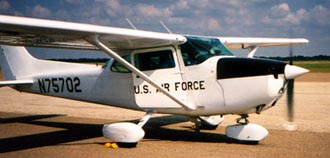
The view from behind the seat, though not as impressive as from the front seats, is made more intense by the lift of the aircraft into the air. The Pilot makes his first check in and the Observer begins to document the mission. Scanners affix their eyes on the side downward view. The Scanner will likely make contact with any target before any other crew member.
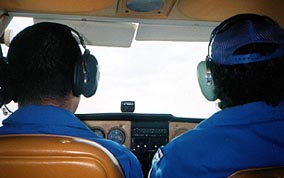
Let's light this candle!
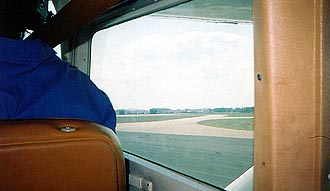
Making our way to the airstrip for taxi and lift off!
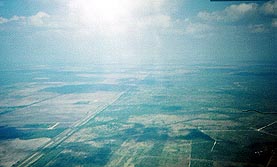
From the air the world might seem smaller; but as this picture shows, it is still a big place. The aircrews make the job of looking for downed aircraft and lost people thousands of times easier than if it were just as ground operation. Since the early days of the First World War, the importance of altitude in observation has been evident. In addition, radio signals are easier to track from the air since there are few ground obstructions. The best Civil Air Patrol units are those that have a good aircrew, a good ground crew and the ablity to use these two in a Search and Rescue situation. Its not all about flying, or all about the field; rather it is the best of both worlds.










